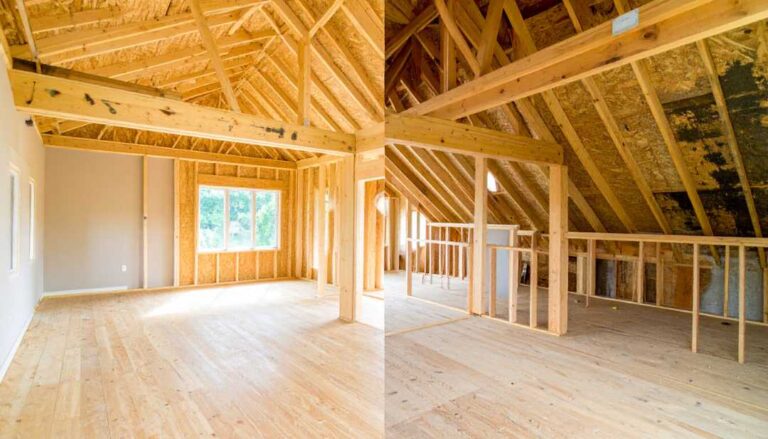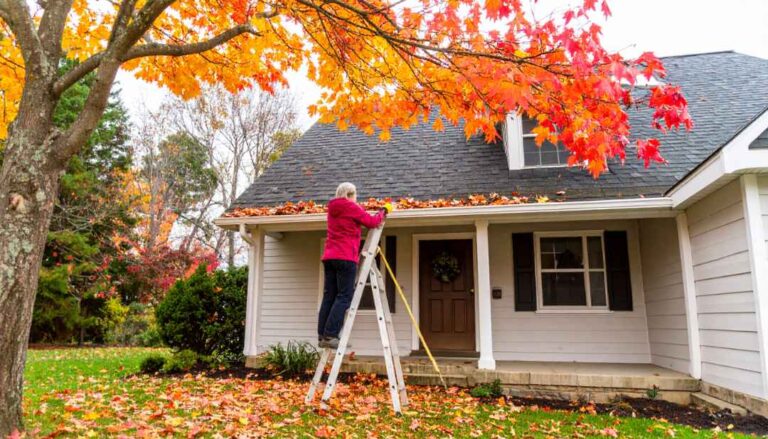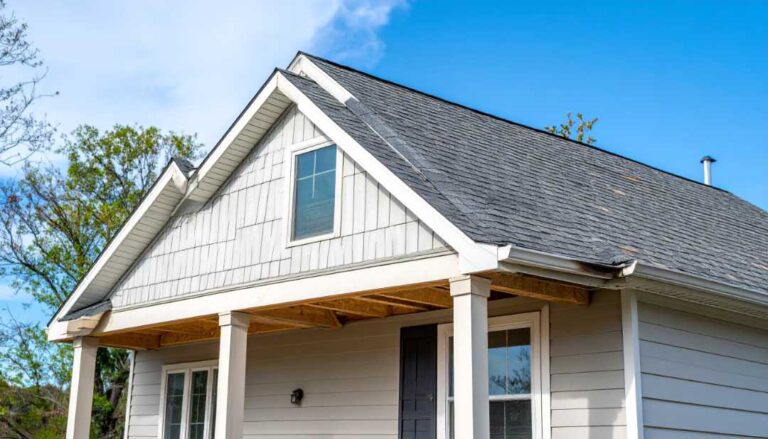Replacing your roof is one of the most significant investments you’ll make in your home. It’s a decision that impacts not only your property’s value and curb appeal but, more importantly, its protection from the elements for decades to come. For homeowners in Illinois, deciding when to undertake this crucial project is just as important as choosing the right materials and contractor. The weather patterns in our state – from the bitter cold of winter to the humid heat of summer and the unpredictable nature of spring and fall – play a substantial role in the efficiency, cost, and overall success to replace your roof.
At Seidel Exterior Group, we’ve been helping Illinois residents make informed decisions about their roofing needs for years. We understand the nuances of working in our climate and believe that choosing the optimal time for your roof replacement can lead to a smoother project, a more durable installation, and even potential cost savings. While emergencies can force a replacement at any time, understanding the advantages and disadvantages of each season can empower you to plan strategically.
Let’s break down the best times of year to replace your roof in Illinois, exploring the pros and cons of each season.
The Ideal Window: Late Spring & Early Summer
For most asphalt shingle roof replacements in Illinois, late spring (late April through June) and early summer (July)often present the most favorable conditions.
Pros:
- Optimal Temperatures for Materials: Asphalt shingles are designed to be installed in moderate temperatures. When it’s too cold, shingles become brittle and can crack when handled, making proper sealing difficult. When it’s too hot, they can become excessively soft, making them vulnerable to damage from foot traffic during installation. Late spring and early summer offer that perfect sweet spot: consistently above freezing but typically below extreme summer highs. This allows the shingles’ self-sealing adhesive to activate properly, creating a strong, watertight bond crucial for longevity.
- Predictable Weather (Relatively): While Illinois weather is always somewhat unpredictable, late spring and early summer generally see fewer prolonged periods of heavy rain or severe thunderstorms compared to true spring. This allows roofing crews to maintain a more consistent work schedule without significant delays due to inclement weather.
- Longer Daylight Hours: Extended daylight hours mean more productive work time for roofing crews. This can lead to faster project completion, minimizing the disruption to your daily life.
- Availability of Materials and Crews: While contractors can get busy during this peak season, materials are readily available, and roofing companies are fully staffed, often able to complete projects efficiently.
Cons:
- Peak Season Demand: Because it’s the ideal time, many homeowners are planning their replacements during these months. This can mean a longer waiting list for reputable contractors like Seidel Exterior Group. It’s crucial to plan ahead and book your project well in advance.
- Potential for Pop-Up Storms: While generally more stable, spring and early summer can still bring sudden thunderstorms, heavy downpours, or even hail, which can cause temporary delays.
A Strong Contender: Early to Mid-Fall
Early to mid-fall (September through October) also offers excellent conditions for roof replacement in Illinois.
Pros:
- Favorable Temperatures: Similar to spring, fall brings moderate temperatures that are excellent for shingle installation. The days are typically warm enough for the adhesive to activate properly, but without the intense heat of mid-summer.
- Stable Weather Patterns: After the summer storm season, fall often provides stretches of clear, crisp weather, which is ideal for exterior work. There’s less humidity compared to summer, which can also be a plus.
- Reduced Demand (Sometimes): While still a busy period, the initial rush of the spring/early summer peak season might have subsided slightly, potentially offering slightly more flexibility in scheduling.
- Preparation for Winter: Replacing your roof in the fall ensures your home is fully protected and ready to withstand the inevitable challenges of the Illinois winter (snow, ice, freezing temperatures) before they arrive. This provides significant peace of mind.
Cons:
- Daylight Hours Shrink: As fall progresses, daylight hours get shorter, which means less time for the crew to work each day, potentially extending the project duration slightly.
- Increasing Risk of Cold Snaps: Late fall can bring sudden drops in temperature, which can make shingle installation more challenging and affect adhesive sealing if not carefully managed.
- Falling Leaves: While not a deal-breaker, fallen leaves can complicate cleanup for the roofing crew.
The Less Ideal Times: Winter & Mid-Summer
While a roof replacement can technically be done in these seasons, they come with significant challenges that often make them less ideal choices for planned projects.
Winter (Late November through March)
Pros:
- Contractor Availability: You might find that roofing contractors have more availability during the slower winter months.
- Potential for “Off-Season” Deals: Sometimes, if contractors are looking to fill gaps in their schedule, you might find slightly more competitive pricing. However, this often comes with caveats related to the challenges below.
Cons:
- Temperature Restrictions: This is the biggest hurdle. Asphalt shingles become brittle in cold weather (below 40-45°F). They are harder to cut, more prone to cracking during installation, and, critically, their self-sealing adhesive won’t activate until temperatures consistently rise. This means shingles may not fully seal until spring, leaving your roof more vulnerable to wind uplift and leaks during winter storms.
- Snow and Ice: Winter precipitation creates hazardous working conditions for crews and significantly delays projects. Snow and ice must be completely cleared from the roof deck before installation can begin, adding time and cost.
- Shorter Daylight Hours: Limited daylight further extends project timelines.
- Increased Risk of Damage: Installing shingles in extreme cold increases the risk of product damage during installation, potentially leading to issues down the road.
- Logistical Challenges: Accessing the roof can be difficult and dangerous due to icy conditions. Protecting landscaping from falling debris is also more complex in frozen ground.
- When Winter is Necessary: Emergency replacements (e.g., after severe storm damage) sometimes must happen in winter. In these cases, experienced contractors like Seidel Exterior Group will take extra precautions, using specialized adhesives (cold-weather cements) and carefully staging materials to mitigate risks. However, it’s never the preferred option for a planned replacement.
Mid-Summer (August)
Pros:
- Long Daylight Hours: Similar to early summer, there’s ample daylight.
Cons:
- Extreme Heat: Illinois summers can be brutally hot and humid. High temperatures make shingles excessively soft and sticky, making them prone to damage from foot traffic during installation. This can cause “bruising” or scuffing that impacts the shingle’s protective granular surface.
- Crew Fatigue/Safety: Working on a hot roof is physically demanding and can pose safety risks (heat exhaustion).
- Pop-Up Thunderstorms: August can still be prone to intense, sudden thunderstorms, causing delays.
- Less Optimal Adhesive Activation: While the heat does activate the adhesive, excessive heat can sometimes cause a too-rapid bond that isn’t as strong as one formed under more moderate conditions, or it can make the shingles overly pliable, leading to minor deformation if not perfectly laid.
Planning Your Roof Replacement with Seidel Exterior Group
The “best” time to replace your roof in Illinois ultimately depends on a balance of factors, including weather conditions, contractor availability, and your personal timeline. However, aiming for late spring, early summer, or early to mid-fall generally offers the most advantages for an optimal installation.
Here at Seidel Exterior Group, we emphasize quality craftsmanship and durable results. We understand that a roof replacement is a significant undertaking, and we’re committed to making the process as smooth and efficient as possible for our Illinois clients.
Our Recommendations:
- Plan Ahead: If your roof is approaching the end of its lifespan (typically 20-30 years for asphalt shingles), start planning your replacement in advance. Contact us in late winter or early spring to schedule your inspection and secure your spot in our schedule for the prime seasons.
- Prioritize Quality Over Speed (Especially in Off-Seasons): While speed is a factor, the quality of installation is paramount. A reputable contractor will prioritize proper installation techniques regardless of the season.
- Emergency Situations: If your roof experiences sudden, severe damage outside of the ideal season, don’t delay. Contact us immediately. We have the expertise and resources to address emergency roof replacements and repairs safely and effectively, even in challenging conditions.
Choosing the right time for your roof replacement is a strategic decision that contributes significantly to your new roof’s longevity and performance. By understanding the seasonal impacts, you can ensure your investment is protected from the ground up, keeping your Illinois home safe and secure for decades to come.
Ready to discuss your roof replacement? Contact Seidel Exterior Group today for a comprehensive, no-obligation inspection and consultation. Let us help you plan your project at the ideal time for your home and ensure a superior, long-lasting result.



